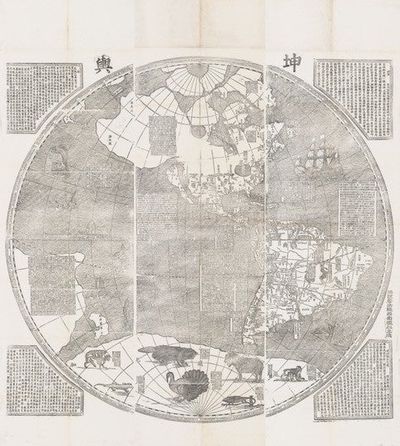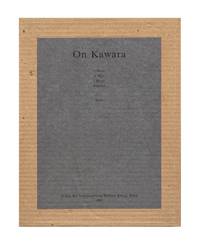1860
by VERBIEST, Ferdinand
1860. Six sheets, all woodblock-printed on one side, each sheet measuring ca. 1785 x 570 mm., forming two sets of three sheets each, the sets showing the world in two hemispheres. Each set with four large spandrels in corners, with text. Woodcut illus. of animals in the southern polar landmass, a multi-masted trading ship, etc. [Seoul]: colophon dated 1860.
The very rare Korean edition of the famous Verbiest map, first printed in Beijing in 1674 by the Jesuit Ferdinand Verbiest (1623-88). His map, one of the largest woodblock-printed maps, was probably based on the 1648 world map by Blaeu. In 1856, a new issue of the Verbiest map was (truncated)
The very rare Korean edition of the famous Verbiest map, first printed in Beijing in 1674 by the Jesuit Ferdinand Verbiest (1623-88). His map, one of the largest woodblock-printed maps, was probably based on the 1648 world map by Blaeu. In 1856, a new issue of the Verbiest map was (truncated)




